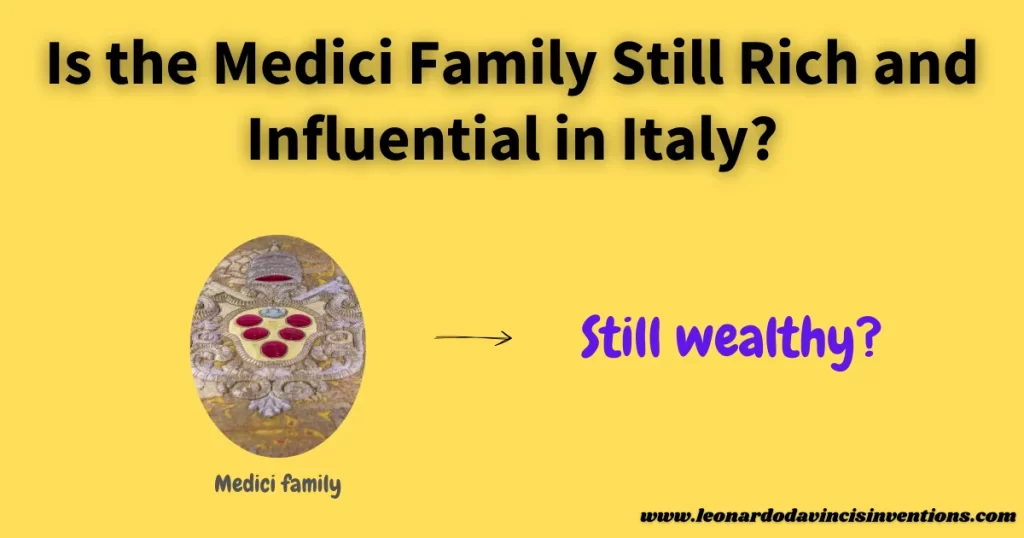
Is the Medici family still rich? This question conjures up images of grand palaces, priceless art, and legendary power in Italy.
Many people wonder what has happened to the wealth and influence of the famous Medici family, who helped shape the Renaissance.
This blog post explores their present-day status and reveals what you might not expect about their legacy.
Today, the Medici family is no longer as rich or influential in Italy as it once was, and much of its historic wealth has faded.
The Medici name remains famous in art, politics, and banking, but their direct power and fortune no longer play a major role in modern Italian society.
You will learn what became of the Medici fortune and how the family’s legacy is remembered in Florence and beyond.
The story of the Medicis is full of twists, from ruling Florence to supporting famous artists like Michelangelo.
Discover how a family that once changed the world with wealth and choices lives on more in legend than in present-day fortunes.
The Historical Wealth and Power of the Medici Family
The Medici family’s journey from Florentine bankers to European noble rulers shaped centuries of art, politics, and culture.
Their banking empire and political alliances built vast wealth and influenced everything from Italian society to the Catholic Church.
Origins of the Medici Family Banking Empire in Florence, Italy
The Medici family began as merchants in Florence in the late 13th century.
Giovanni di Bicci de’ Medici founded the Medici Bank in the early 1400s.
This bank quickly became one of Europe’s largest, handling money for the pope and wealthy clients.
Florence became the heart of the Medici banking empire.
Using their financial skills, the family expanded into cities such as Rome, Venice, London, and Geneva.
With their fortune, they supported local guilds and lent money to royals and city governments.
The family’s banking success led to immense economic influence.
Their wealth management strategies made them stand out among Europe’s powerful families.
The Medici legacy of financial skill is still studied today as a blueprint for generational wealth.
Cosimo de’ Medici and the Rise of Medici Political Power
Cosimo de’ Medici, often called Cosimo the Elder, used his wealth to establish the family’s political dominance in Florence.
He gained support by helping weaker political groups, funding public works, and balancing rival factions.
Cosimo eventually controlled Florentine politics through banking and careful alliances without holding a formal office.
He became a respected leader, admired for his moderation and wisdom.
Cosimo put family interests above personal glory, which helped stabilize their position for generations.
Under his direction, the Medici family dynasty set a standard for influence in politics and commerce.
His leadership marked the shift from wealthy merchants to a noble family intertwined with the future of Florence.
Lorenzo de’ Medici’s Role as a Patron of the Arts and Renaissance Culture
Lorenzo de’ Medici, known as Lorenzo the Magnificent, played a major role in the culture of Renaissance Italy.
He supported artists, writers, and scientists, helping Florence become the center of art and learning during the 15th century.
Lorenzo’s patronage supported talents such as Leonardo da Vinci, Michelangelo, and Botticelli.
He used part of the Medici fortune to found academies, sponsor public festivals, and collect rare books.
This art sponsorship changed not only Florence but also the rest of Europe.
Lorenzo shaped the city’s Renaissance legacy by linking wealth with cultural investments.
The Medici family’s influence on European art and culture remains visible in museums, palaces, and libraries throughout Italy.
The Nobility and Titles: Dukes, Princes, and Medici Family Branches
Over time, the Medici family gained noble titles and became powerful aristocrats.
They became Grand Dukes of Tuscany in 1569 and held titles such as Marquesses and Princes.
This transformation from bankers to nobility showed the depth of their rise.
The Medici family created several branches.
Some controlled Florence, while others managed areas like Milan and Rome.
They acquired vast estates and properties across Italy, such as villas and country palaces.
These titles elevated the family’s social standing and allowed them to make military, diplomatic, and political decisions that affected Italian history.
Other noble families often sought to form alliances with the Medici due to their power.
Medici Popes and Their Influence on the Catholic Church and Italian History
Several Medici family members became popes, including Pope Leo X and Pope Clement VII.
Their position allowed the family to shape the direction of the Catholic Church and influence Italian society on a grand scale.
Medici popes promoted religious art and helped build or redesign many vital churches in Rome and Florence.
They used the Medici fortune to back projects such as rebuilding St. Peter’s Basilica and funding prominent Renaissance artists.
Their time in the Vatican connected religious, economic, and political power.
The Medici family’s historical impact reached beyond Tuscany and influenced European and church history.
The Decline and Legacy of Medici Wealth and Influence
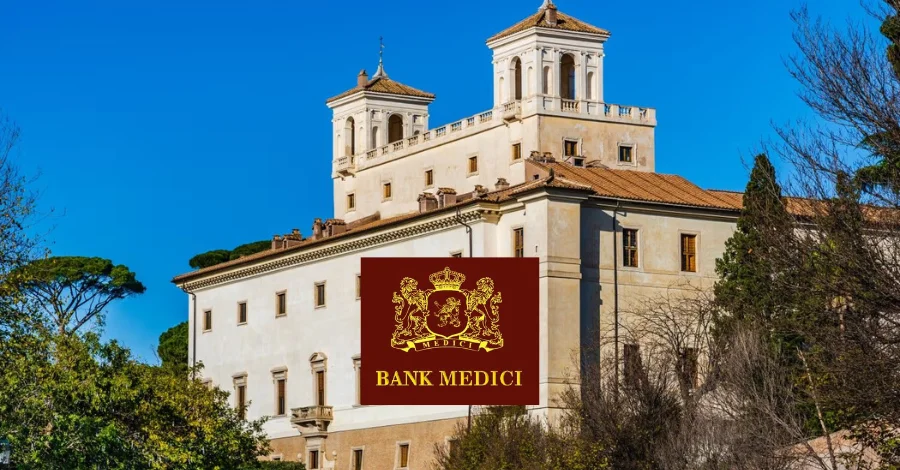
The Medici family shaped Florence and Italy through banking, political power, and art patronage.
Their long history included dramatic rises and falls and lasting cultural influence.
Fall of the Medici Family: Decline and the End of Their Banking Success
At its height, the Medici banking empire dominated Europe’s financial world during the Renaissance.
Cosimo de’ Medici and Lorenzo de’ Medici built bank branches in major cities, including Rome, London, and Bruges.
By the 16th century, mismanagement, risky loans, and increased competition caused the Medici bank to collapse.
Political struggles in Florence further weakened their control.
In 1494, the family was exiled from Florence and lost much of its wealth and power.
The Medici later returned but never regained their former prominence as leading bankers or rulers.
Historical Examination of Medici Generational Wealth Preservation
The Medici family practiced generational wealth management by investing in art, land, and political alliances.
Their noble status and marriages with other powerful families helped secure their place among the European elite for generations.
Despite these efforts, the family struggled to preserve its fortune over the centuries.
Frequent internal rivalries and shifting fortunes drained their resources.
By the 18th century, the main Medici line died out, ending the dynasty as major landowners or wealthy aristocrats.
Their remaining properties were absorbed by the new ruling House of Lorraine, ending the direct link between Medici descendants and their original wealth.
Impact of the Fall of Fascism on the Medici Family Status Today
The fall of fascism in Italy after World War II led to significant changes for many old noble families, but it had little direct effect on the Medici family’s status.
By this point, no Medici heirs remained with the wealth or estates the family once held.
After Mussolini‘s fall, the monarchy was abolished, and Italy became a republic, curbing the influence of families that had once shaped Italian history.
Today’s Medici legacy is mainly historical and cultural, centered in Florence’s museums, art collections, and palaces.
The family is remembered as patrons of the arts rather than political or economic leaders in modern Italy.
Medici Family Estates and Properties: Wealth Distribution Over Time
The Medici built grand estates, including the Palazzo Medici Riccardi and Villa Medici, that showcased their wealth and support for Renaissance culture.
Their properties and art treasures became famous across Europe.
Over the centuries, much of this wealth was distributed, sold, or transferred to others.
Many palaces and villas now serve as museums or public buildings.
Some Medici art collections became part of the Uffizi Gallery and other Italian museums, preserving their legacy for future generations.
The family’s direct line left few heirs, so the historical Medici estates no longer belong to private Medici family members or modern descendants.
Comparing Medici Fortune to Modern Moguls and Richest Families
Estimates of Medici wealth during their peak vary, but historians agree it was immense compared to others in Renaissance Europe.
Some compare their fortunes to those of today’s richest families, such as the Rockefellers or the Rothschilds, when adjusted for inflation and historical value.
No Medici family member today appears on lists of modern moguls or wealthy families.
Their banking empire and noble status have not survived into the present day.
The Medici’s influence in culture and politics still surpasses that of many modern families, but their personal riches and economic power cannot match the scale of today’s global billionaires.
Is the Medici Family Still Rich and Influential in Italy Today?
The Medici family’s fortune and power shaped much of Italian history, especially in Florence during the Renaissance.
Today, their wealth and influence have shifted, but their legacy remains a key reference in understanding generational wealth, nobility, and cultural sponsorship in Europe.
Modern Descendants and the Medici Family Wealth Today
Modern descendants of the Medici family exist, but they no longer enjoy the enormous wealth their ancestors once controlled.
The Medici banking empire, which fueled their prominence during the Renaissance, dissolved centuries ago.
Today’s Medici descendants live as private citizens, often without notable fortune compared to wealthy dynasties of the current era.
Historical records show that the vast Medici estates and properties were gradually sold or inherited by other families as the family line thinned.
The Medici family is no longer in power and does not participate in Italy’s top circles of wealth.
Compared to modern moguls or the richest families in Europe today, the Medici family’s financial clout has faded into history, and there is no evidence of significant generational wealth remaining.
Medici Legacy Today: Influence on Italian Society and Florentine Politics
The Medici family no longer holds political power in Florence or Italian society. However, their presence remains deeply woven into Italy’s identity.
Florence’s monuments, palaces, and institutions remind people of the family’s impact. Schools, universities, and historians continue to respect and study the Medici name.
Modern governments, not noble families, shape Florentine politics today. Still, the Medici legacy influences the city’s cultural branding and tourism strategies.
Their past as rulers and patrons of the arts helps Florence attract visitors from around the world. Local traditions also reflect the family’s historical influence.
Medici Family’s Role in Contemporary Art and Culture Sponsorship
During the Renaissance, the Medici family sponsored artists like Botticelli and Michelangelo. The family does not play a major role in art or cultural sponsorship today.
Their era of great art patronage has ended. Museums, galleries, and restored Medici landmarks in Florence now preserve their legacy.
Collections and museums like the Uffizi Gallery showcase their support of Renaissance art. Modern descendants do not make large-scale donations or sponsor new works.
Italian institutions and the government now manage and promote Medici-related art and culture. They focus on preservation and public access.
Evaluating the Medici Family’s Economic Influence in Modern Europe
The Medici family once gained significant economic influence through banking and politics. Today, they no longer contribute to Europe’s economy.
Modern business dynasties like the Rockefellers and Rothschilds have much greater wealth than any remaining Medici holdings. The Medici fortune shaped early banking and capitalism, but their wealth did not last into modern times.
The Medici name still holds historical importance, but not financial power. Their institutions have disappeared, ending any direct economic impact in Italy or Europe.
The Enduring Historical Prominence of the Medici Family Dynasty
The Medici family remains important in Italian and European history. Museums, art, and academic studies highlight Cosimo de’ Medici and Lorenzo de’ Medici for their roles in the Renaissance.
Their story shows how generational wealth and influence shaped Florence and the Catholic Church. Today, people remember the Medici family through history books, restored landmarks, and ongoing interest in their rise and fall.
Frequently Asked Questions
The Medici family was famous for its wealth, banking role, and support of the arts. People still want to know about their fortune, legacy, and how their power compares to others in Italian history.
How much money would the Medici family have today?
Estimates suggest their fortune could be as high as $129 billion in modern money. This was a considerable amount for that era.
At their peak, the Medicis were among the wealthiest families in Europe. Read more about the enormous Medici fortune.
Does the Medici family exist today?
There are no direct male heirs of the main Medici line alive today. The family line ended in the 18th century.
Some may claim distant links, but the prominent banking dynasty is no longer active.
What happened to the Medici wealth?
Over time, the Medici fortune slowly faded. Expensive wars and poor leadership by later family members led to financial decline.
By the time the last Medici died, most of their money and assets had been spent or divided up.
Why did Italy hate the Medicis?
Some Italians saw the Medicis as controlling and corrupt because they ruled Florence for centuries. Rivals wanted more freedom from Medici rule.
Their power sometimes came at the expense of public wishes and other noble families.
How rich was Cosimo Medici?
Cosimo de’ Medici was the wealthiest member of the family in the 15th century. He used his bank’s success to gain power and support artists.
Estimates show his wealth made him one of Europe’s wealthiest men of the time.
How much of Netflix’s Medici is true?
The show features real events and people from Medici history, but some characters, drama, and timelines are changed for storytelling. Not everything in the series is historically correct.
Facts inspire details about the family’s rise and main figures, but other parts are fictionalized.
Who are the wealthiest people of all time, adjusted for inflation?
Some calculations place the Medici family near the top, but people like Mansa Musa of Mali and John D. Rockefeller are often considered even richer when converted to today’s money.
This depends on how historians measure and compare wealth from different eras.
Who was the most powerful family in Italy?
During the Renaissance, the Medici family was the most powerful in Florence and one of the most influential across Italy. Families like the Sforza and Borgia also had power in their regions.
The Medicis led for centuries in banking and politics.
What did Cosimo de Medici do with his money?
Cosimo de’ Medici used his wealth to support churches, build public libraries, and fund artists like Donatello. He believed in the arts and education.
His patronage helped start the Italian Renaissance.
What is the Medici Palace used for today?
The Medici Palace in Florence, Palazzo Medici Riccardi, serves as a museum and government building. Visitors can see art and explore historical rooms.
The palace is open to the public. During your visit, you can learn about the story of the Medici family.
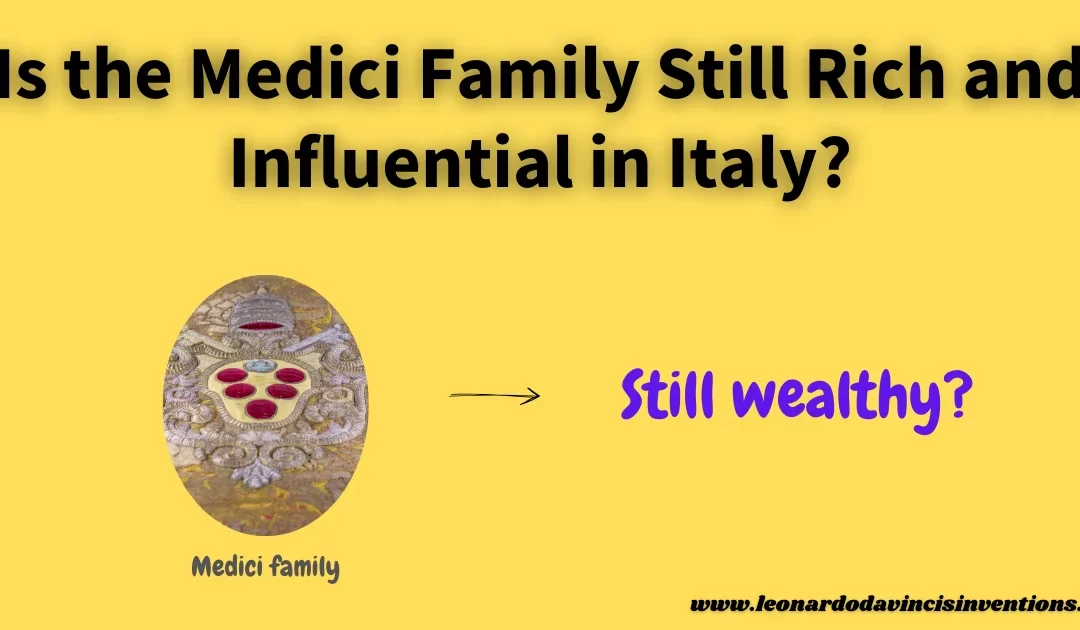
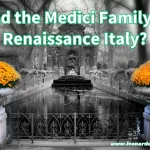
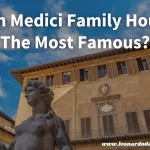

 Leonardo Bianchi,
the creator of Leonardo da Vinci's Inventions.
Thank you for visiting
Leonardo Bianchi,
the creator of Leonardo da Vinci's Inventions.
Thank you for visiting